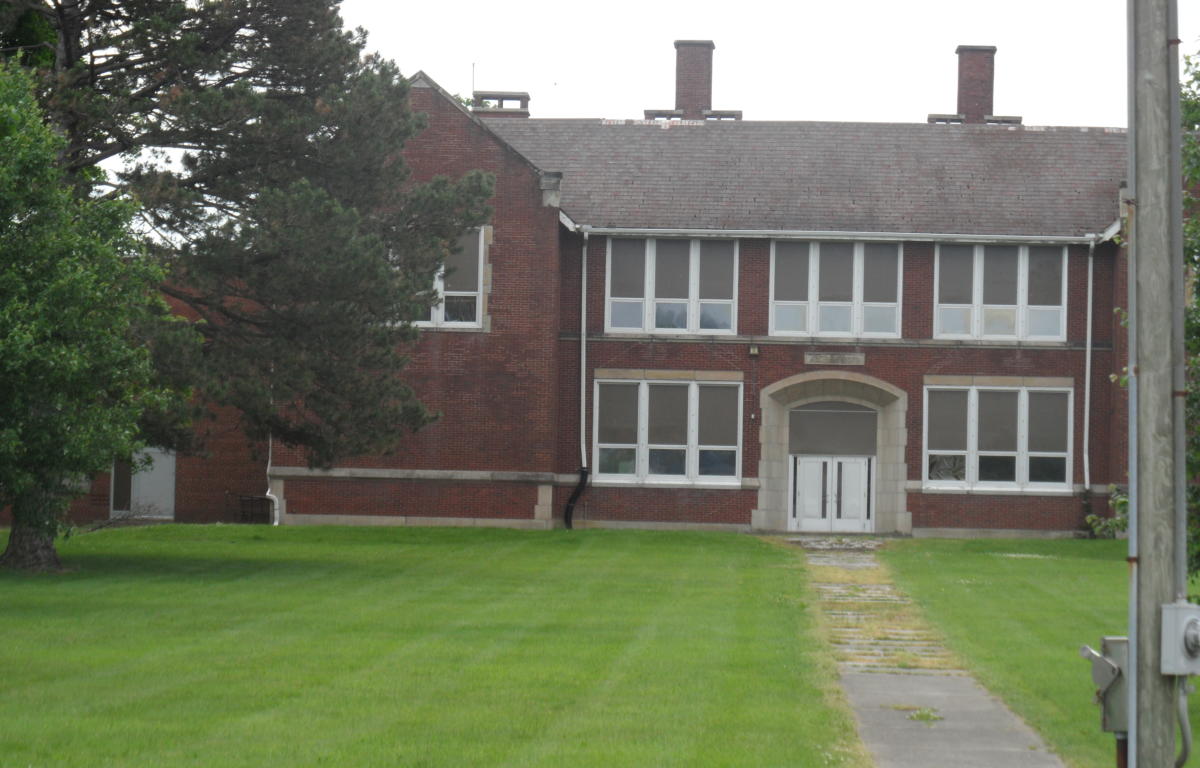By Gary Ogle
gogle@wbcowqel.com
Some people look at a high school and hear students in the hallways and envision potential maturing into reality. The last couple of years Colonel Crawford Superintendent Todd Martin looks at his high school and hears rain falling and sees a leaky roof along with repair bills that don’t end.
 That’s why the district Martin oversees worked to find a way to secure $6.4 million in state funding for a new high school wing on its existing K-8 building even though voters twice rejected a half-mil levy that would have guaranteed it.
That’s why the district Martin oversees worked to find a way to secure $6.4 million in state funding for a new high school wing on its existing K-8 building even though voters twice rejected a half-mil levy that would have guaranteed it.
“This $6.4 million will fix a lot of financial problems that would ruin us eventually,” Martin said.
“This $6.4 million that the state is giving will tear down buildings that we could never, ever . . . . We couldn’t ever have $2.8 million to tear down Sulphur, Whetstone and the old intermediate buildings down,” Martin said. “We would never have that money. We’ve got to get it now, or those buildings will be there forever and nobody wants that.”
In addition to the high school wing to replace the current high school classrooms, the money will allow the district to tear down old buildings at North Robinson, Sulphur Springs and Whetstone in addition to portions of the current high school. What will remain of the current high school will be the gym, pool, cafeteria, vocational education areas plus remodeling a couple of classrooms into district administrative offices. Contrary to what some in the district have thought there will be no new gymnasium. The current Mac Morrison gymnasium will be where the Eagles and Lady Eagles play as they have for the last 50-plus years.
Martin acknowledged that there are those who questioned why or how the district could proceed with a project that voters rejected millage in order to secure funding. The why of Martin’s answer is simple.
“The high school kids will have a much better environment for education,” Martin said, explaining that if the wind blew from the right direction some of the walls were even starting to allow water into the building.
The how is bit more complicated.
“There are a number of factors that led us down this road,” Martin said.
Martin noted that when the original project was approved by voters and secured in 2003 the state did not have the current 0.5-mil requirement for operational expenses to guarantee continued operation of a new building. Those original plans included a high school wing and the state said Colonel Crawford qualified for a 69/31 partnership – the 69 percent being Colonel Crawford’s share.
“Over $14 million the district has paid for this project,” Martin said. “To finish this project the state is giving us $6.4 million which is their 31 percent.”
Martin and the board had been told by state officials that the district would have to pass a 0.5-mil levy in order to get that money. The district made two attempts, the last of which came in May. Both times the voters turned it down. All the while, Martin and the board were looking at other options.
“We needed to prove we can maintain the building,” Martin said. “We made a few cuts this year by not replacing a teacher that retired and moving some people around in the district, and not replacing an administrative assistant. We’re well over the $57,000 amount (0.5-mil revenue), well over.”
Martin said state officials also investigated where the district was at in terms of what inside millage was on the books and saw additional room there.
“We have enough that if push came to shove we could use that,” Martin said. “We are trying to be good stewards. We are looking at every avenue to proceed with what we already have.”
Martin said that while hopeful the district could proceed with building the new high school wing without the levy, he and the board felt they had to try to guarantee it with passage of the levy. Ironically, they received an email from state officials approving funding without the levy the day after it had been defeated.
“To make those cuts put a strain on everybody,” Martin said of the cost-cutting measures.
Of the $6.4 million in state funds, $2.8 million will be used to tear down the old structures. While the bidding process will begin this summer, the old buildings will begin coming down this fall and the new wing erected shortly after that.
“We’ve got to get it now or those buildings will be there forever and nobody wants that.”


